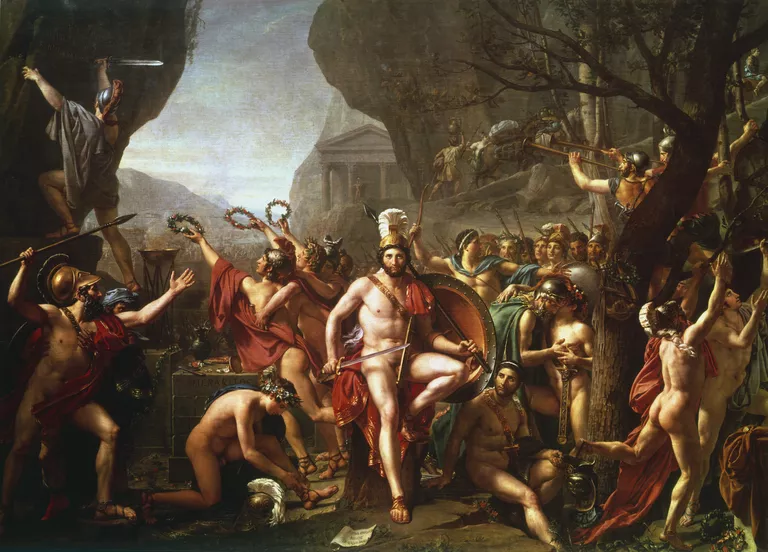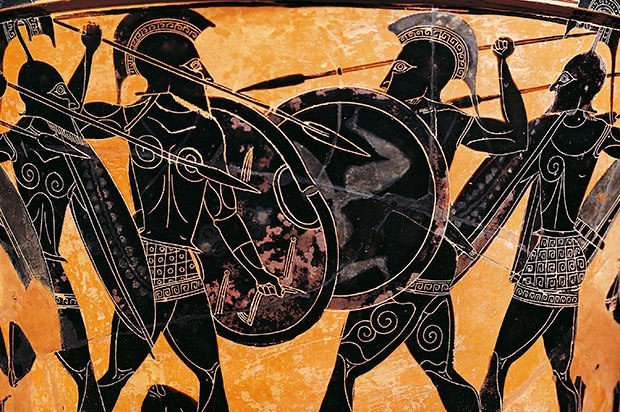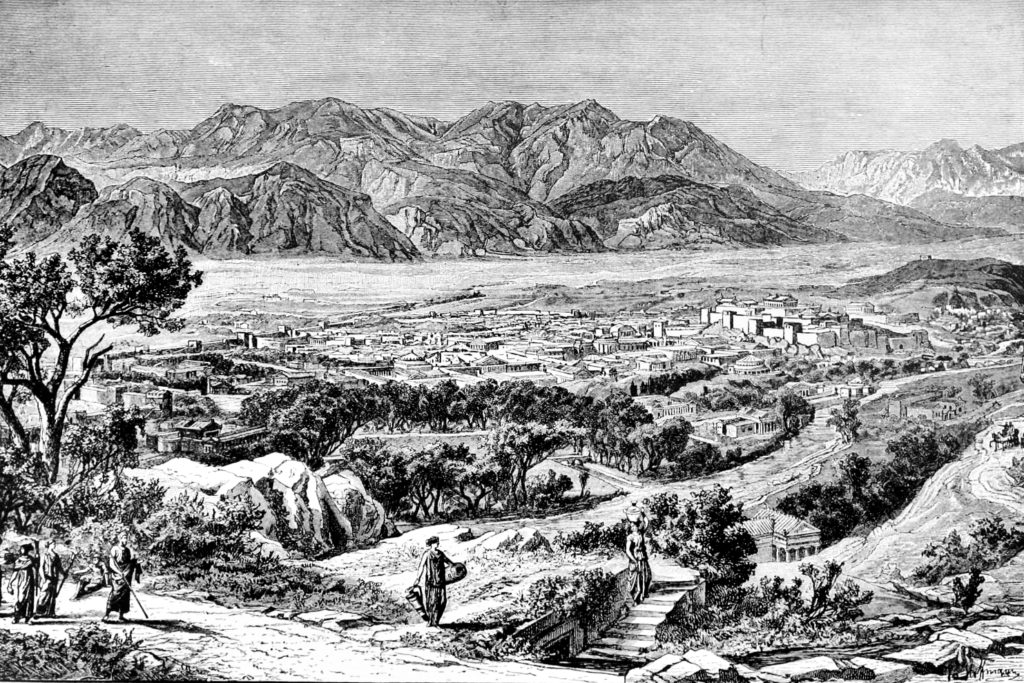Last updated on September 29th, 2022 at 02:08 am
There is a tale about how the famed Spartans of Ancient Greece brought their children into the world. Whenever a child was born, it was brought quickly before the Gerousia, the council of 30 men who essentially ruled the city-state.
The Gerousia would then decide if the child was healthy or not worthy of being raised as a mighty Spartan warrior if it was a boy or a woman who would sire healthy Spartan warriors one day if it was a girl.
If the Gerousia decided against the child, it was then taken and exposed on Mount Taygetos, which overlooked Sparta.
This primitive and brutal form of ancient eugenics was representative of how Spartan life functioned, a never-ending drive to produce warriors who were famed as the greatest fighters in the Greek world. Here we explore what daily life was like in Ancient Sparta.

The Agoge
For Spartan boys, daily life revolved around the agoge, a rigorous training program all males were required to complete during their youth.
The emphasis early on between the ages of seven and fourteen was on physical training and exercise, with some reading and writing basics, but certainly not as great an emphasis as there would have been on these in Athens and other city-states.
At some point in his teens, the Spartan youth advanced to eat in the common mess halls of the Spartan adult males. His training would have taken on a more military edge at this point.
This was in advance of the final stage of his education during his early adult years. At this stage, Spartan males were often sent out into the countryside, away from Sparta itself. There they had to learn to forage off the land for a time and survive without social support.

They were also encouraged to attack some of the Helots, the subject class of Messenians, and other neighboring peoples whom Sparta had conquered between the eighth and sixth centuries BC.
In this way, the final stages of the agoge system acted as a way for Sparta to instill terror in its subject people, whose labor allowed the warrior society to function without Spartiates worrying about performing agricultural activity.
Once this final stage was complete, the Spartan youth advanced to become a full Spartan warrior. Spartan girls were not involved in the agoge system.
However, there was still a great emphasis for girls on training physically to prepare themselves to rear the strongest Spartan warriors.
Spartan Warriors
Daily life for a Spartan warrior was in many ways a continuation of the life one became accustomed to in the agoge. The emphasis remained on keeping physically fit and honing one’s fighting abilities.
Because the Spartans had the Messenians and other peoples placed under firm control and treated them effectively as a slave class who carried out agricultural work and other activities, Spartan males did not work in a traditional sense.

Moreover, unlike nearly all other Greek city-states, Sparta was not centered on a city or town. Sparta, such as it was, was effectively a giant military camp.
As such, one of the Spartiates’ primary roles was to continue to make sure the Helots were fearful of rebelling or disobeying their overlords.
Mess Halls, Constitution, and Private Property
Adult Spartans also did not eat in their own homes. Instead, meals were shared in communal mess halls presided over by Sparta’s two kings in a system called the syssita.
It was a peculiar feature of the Spartan constitution that there were two royal families, the Agid and Eurypontid lines, each providing a king at a given time.
These ruled in conjunction with a council called the Gerousia of 28 other elders, and five senior magistrates called ephors, a system that ensured a balance of power between competing interests.

In addition to having a political system in which power was dispersed and dining in common mess halls, the Spartans also eschewed private property and wealth.
Indeed their currency, called pelanor, was made of large amounts of iron which was purposefully damaged in the smelting process. The Spartan lawgiver Lycurgus had ordained this to ensure that Spartan warriors never came to covet gold or silver.
Spartan Women
Spartan women lived lives that were in many ways similar to the state’s men. The emphasis from a young age was on physical activity, gymnastics, and training rather than sewing or playing instruments, as might have been more common in Athens and elsewhere.
Both women and men were publicly shamed by Spartan society if they went too long before they married. This is because in a city-state where the population of full Spartiates was relatively low and which nevertheless was reliant on warfare for its entire existence, producing several healthy children was the most important function of any Spartan citizen.
Spartan women shaved their hair when they married. However, the records are less clear as to whether or not they continued to keep it shaved thereafter.
War in Ancient Sparta
Of course, the goal of all this training for both men and women was to create a warrior class out of all Spartan males. There were several reasons for this.
First, spartan society could only function as long as its subject neighbors, the Messenians and other Helots, were aware that the Spartans could crush them if they tried to rebel.
As such, the Spartans had to remain constantly in preparation for war. Moreover, in the sixth century BC, Sparta increasingly became the foremost power in a major alliance of Greek city-states.
Consequently, the Spartans often found themselves at war with foreign states and had to send detachments of Spartan warriors abroad to fight.
This became an imperative for all Spartan warriors when the Persian Empire tried to conquer Greece in the early fifth century BC, leading to the most famous episode in Spartan history, the defense of the Pass of Thermopylae by 300 Spartan warriors in 480 BC against tens of thousands of Persian troops.
Later the enemy became Athens. War followed between the two states and their allies in 431 BC. But while Sparta eventually won the Peloponnesian War in 404 BC and became the foremost political power of the Greek world, its demise also lay in this ascendancy.
In the 390s and 380s, wealth flooded into Sparta on the back of its hegemonic status across Greece. This corrupted its warrior class, which became indolent, while the number of Spartan warriors had also dramatically declined owing to decades of perpetual warfare.
As a result, the Spartans began relying on the Helots to bulk out their armies, and it wasn’t long before an alliance of Greek city-states soon reduced Sparta to a second-rate power after defeating them at the Battle of Leuctra in 371 BC.
By then, daily life in Sparta would have been very different from what it had been in the past, as the small Spartan citizenry began adjusting to a much-changed world.

